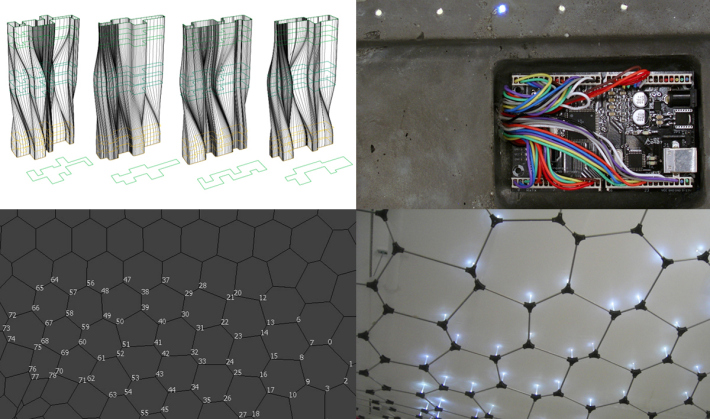Design Processes – Processing Environment
|
Article for Archistorm, France, March 2010 by Mirco Becker There might be some clues in the evolution of a once very special, now almost unthinkable to go without, product – the mobile phone. What do you remember about your first mobile phone? Its design, how much you paid for it, the way your communication behaviour started to change? It was probably everything but handy, but you were somewhat excited about it. Since then the technical development moved forward quickly. It now includes touch-screens, cameras, GPS, motion sensors, mobile internet. The true leap is not so much the addition of these new features but most importantly that these can be linked and mashed-up in any imaginable combination, programmed, and distributed as apps. With the iPhone the hardware has found a neutrally slick form and the emphasis shifted from looks to interaction through touch and motion. Rather than a dedicated device with specific dials, buttons, and sliders it comes as a plain canvas open to hold all desirable applications. So what does this episode of technology history tell us about the design and use of buildings? Most people agree that architecture is not just an appliance. They would consider it as a part of our environment along with landscape and climate. But maybe these categories don’t hold any longer? Wireless networks and micro processors are such an integral part of our daily life so they could be accounted as part of our environment as well such as any other infrastructure – and the boundaries between appliances and environment start to blur after all. If we look back half a century Mies’ Seagram Building marks the pinnacle of modernism which claimed to enable all sorts of uses through plain spatial arrangement and slick facade design. Today’s digital avant-garde argue for specificity, differentiation and hyper-articulation. Their design results in stunning envelopes and new topologies but still is operating on Miesean territory of space and appearance. These expressive forms remind of the design-laden mobiles from Nokia’s “Matrix” to Motorola’s “Razor” which suggested novelty by appearance. Digital technology could go far beyond providing the tooling for designing and fabricating superficial surface articulation or novel spatial arrangement. Buildings are already networked entities with sensors and actuators but mostly running on closed circuits parallel next to each other. It takes very little to make the leap and link them up, synthesizing multiple devices into a larger whole and start to choreograph them. The innovative aspect would be less about form or functionality but more about the possibility to load and develop new links and services. A couple of cameras could set up a spatial self-awareness of a building, tracing the use, reading crowd and body gestures. New occupation patterns would be possibly if building elements could give the users real-time clues as how to navigate. This passes the act of inventing over to the user community and certainly goes beyond mere background customization. It promotes designing and using buildings as processing units where the user can script the performance and ambient behaviour. Thus enabling a new engagement and playful interaction with the environment. |


Good thinking Mirco. Apples greatest advantage comes from understanding that people pay for experiences. They focused on that while others focused on devices. Architects are still stuck to objects. It is human experience that should drive design.
Sivam